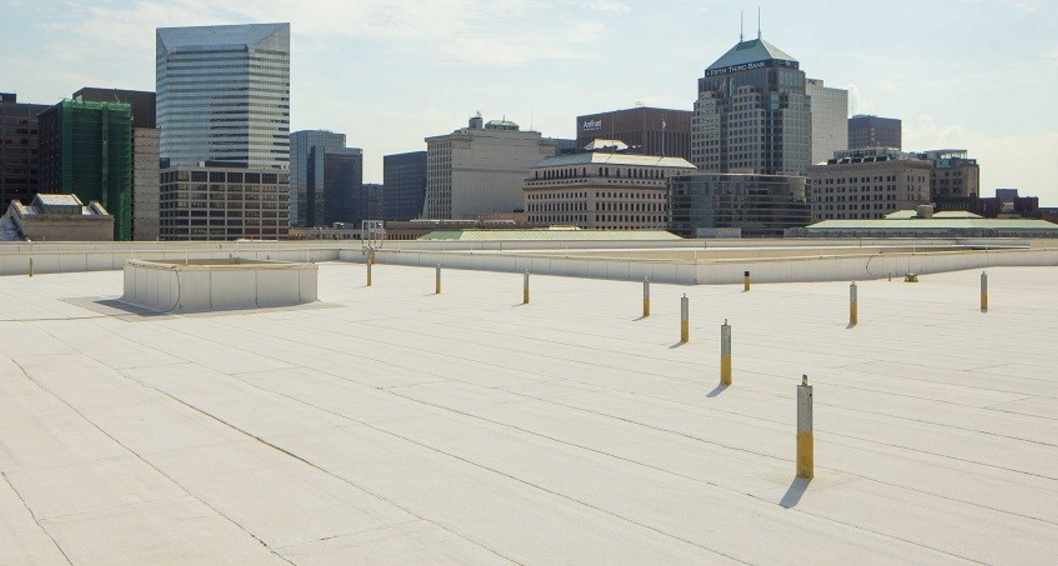Office Design
Opt for a Cool Roof
What Is It?

CertainTEED
Cool roofs are constructed with highly reflective and emissive materials, usually in the form of membranes, coatings, and tiles. Cool roofing materials can have solar reflectance of over 65%, compared to 5-15% for traditional roofing materials. As a result, cool roofs tend to stay within 10-20⁰F of ambient air temperatures in the summer, while conventional roofs can be 55-85⁰F hotter than ambient air temperatures. A simulation of New York City found that use of cool roofing on 50% of available roof surfaces would reduce city-wide temperatures by 0.3⁰F.
Cool roofs are typically categorized as low slope or steep slope, which use different roofing materials. Low slope cool roofs are defined as having no more than a 2:12 pitch. Low slope cool roofs use single-ply membranes or cementitious and elastomeric coatings to increase solar reflectance and thermal emittance. Cool roof retrofits are often considered when existing roofs near the end of their service life. Cool roof coatings have typically been applied to existing roofs that only need moderate repairs, while membranes are often used for roofs needing more extensive repairs. Steep slope cool roofs typically use specially colored tiles with higher solar reflectance or metal roofing to reduce solar heat gain.
While cool roofs reduce cooling energy use in the summer, they can also reduce the amount of solar heat in the winter that could be used to warm the building. As a result, summer energy savings may be partially offset by increased heating costs. In most climates, this offset does not typically exceed the summer energy savings. Building owners should consult tools like the Oak Ridge National Laboratory’s Roof Savings Calculator to determine if cool roofing is a viable investment.
Benefits
- Reduces building summer cooling costs through increased solar reflectance.
- Reduced peak temperatures from cool roofing will increase the service life of the roof and reduce lifetime maintenance costs.
- Cheaper than green roofs while providing similar cooling benefits.
Drawbacks
- Reduced solar reflectance results in increased heating costs in winter. Ultimate net benefit will vary based on geographic region.
Regulatory Impacts and Requirements
Potential regulatory touchpoints in Boston and Massachusetts include:
- Fire Department
- Building Code/Permit
Note: Green and cool roofing are part of the City of Boston’s Climate Action Plan, and policies and programs to support cool roofing may appear in Boston in the near to medium term
NEWS
- “Cool Roofs Mitigate Urban Heat Islands and Climate Change” Sourceable, June 2014
- "Los Angeles Becomes First Major City to Require 'Cool Roofs'" ThinkProgress, December 2013
- “Chicago’s Battle of the Roofs: Green vs. White” Governing.com, December 2012
- "US Department of Energy Embarks on Cool Roof Initiative" GreenBiz, July 2010
RESOURCES
- Berkeley Lab: Cool Roofs
- National Coatings Corporation (NCC)
- ENERGY STAR: Cool Roofs and Emissivity
- EPA: Heat Island Effect
- Energy.gov: Cool Roofs Video
- ACEEE: Cool Policies for Cool Cities: Best Practices for Mitigating Urban Heat islands in North Amercian Cities
- Department of Energy: Guide to Cool Roofs
- ENERGY STAR: ENERGY STAR Labeled Roof Products Case Study


